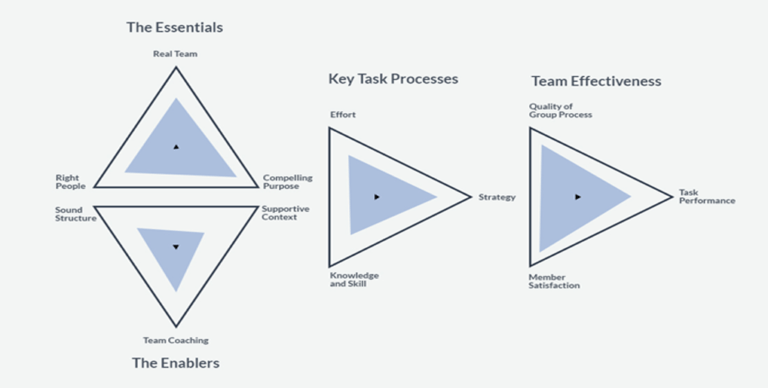Teams that have a big impact on business performance like the Board, Leadership Team, Management or Operational teams, don’t just become high performing unless the team have collaborated themselves to create clarity, structure and confirmed the boundaries for the team. So what are the structures and boundaries needed?
Creating structure, clarity plus confirming team boundaries will help improve performance but how do we do that? Using a proven framework is a great place to start and I’m sure you wouldn’t be surprised that there are a number of Team high performance frameworks including “5 Dysfunctions of a Team” by Lencioni and STC by Dr Peter Hawkins both which are very effective though the structure Orchard Coaching has found to work best is the 6 Team Conditions by Dr Ruth Wageman & Krister Lowe from The Team Coaching Zone. The reasons for the preference is that the 6 Team Conditions provides a more compelling structure to implement than the 5 dysfunctions. It also isn’t as complex as STC therefore is able to be applied more easily by team leaders whereas often a professional team coach is required to work with the team to implement STC effectively.
The 6 Team Conditions framework outlines six conditions which, if implemented, is very likely to create the foundations for a high performing team. The six conditions are broken into two groups of Essential conditions and Enabling conditions.
Team Essentials:
1. Real Team:
A real team is one that is:
- Bounded (everyone knows who’s in or out of the team)
- Interdependent (work with each other to create value rather than as individuals)
- Stable
2. Compelling Purpose:
A compelling Purpose is one that:
- Specifies the End state but not the means of achieving the end state
- Clear
- Compelling
- Consequential
3. Right People:
- Bring a range of perspectives to do the work
- Have the right blend of skills to achieve the purpose of the team
Team Enablers:
4. Sound Structure:
- The team is small (<10)
- Provide meaningful team tasks
- Specific & maintain clear norms of conduct
5. Supportive Context:
- The team leader is able to exercise upwards & outward influence to be able to remove roadblocks, open opportunities & provide the resources the teams need.
The organisation
- Rewards for team performance
- Provides information required for the team
- Provides education for the team to develop
- Provides resources required
6. Team Coaching:
There is a team coaching available, this could be via:
- A team coach
- The team leader or another team member taking on the coaching role.
Do you have the structures and boundaries in place in your business’ teams that have a high impact on your business?
Note there is a diagnostic to benchmark a teams implementation of the 6 conditions which Orchard Coaching can run for you.
To chat about your team, please email me or schedule a meeting via Calendly.

